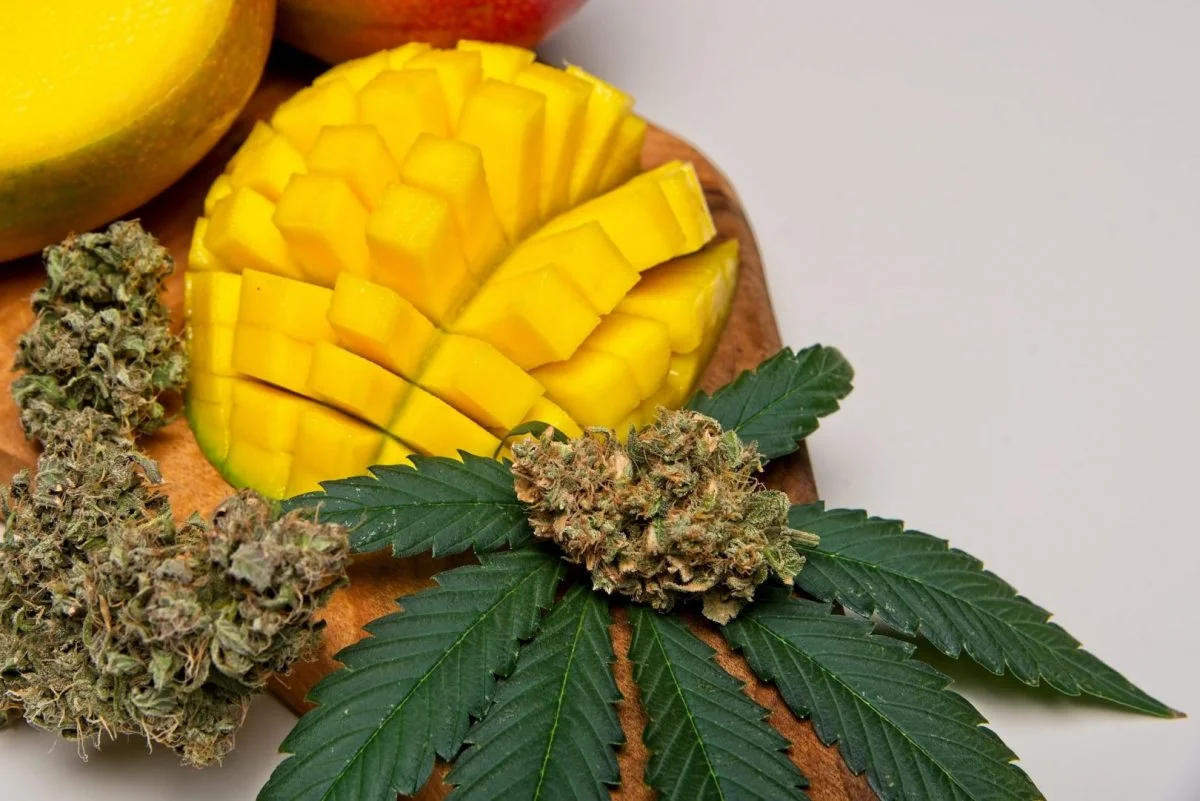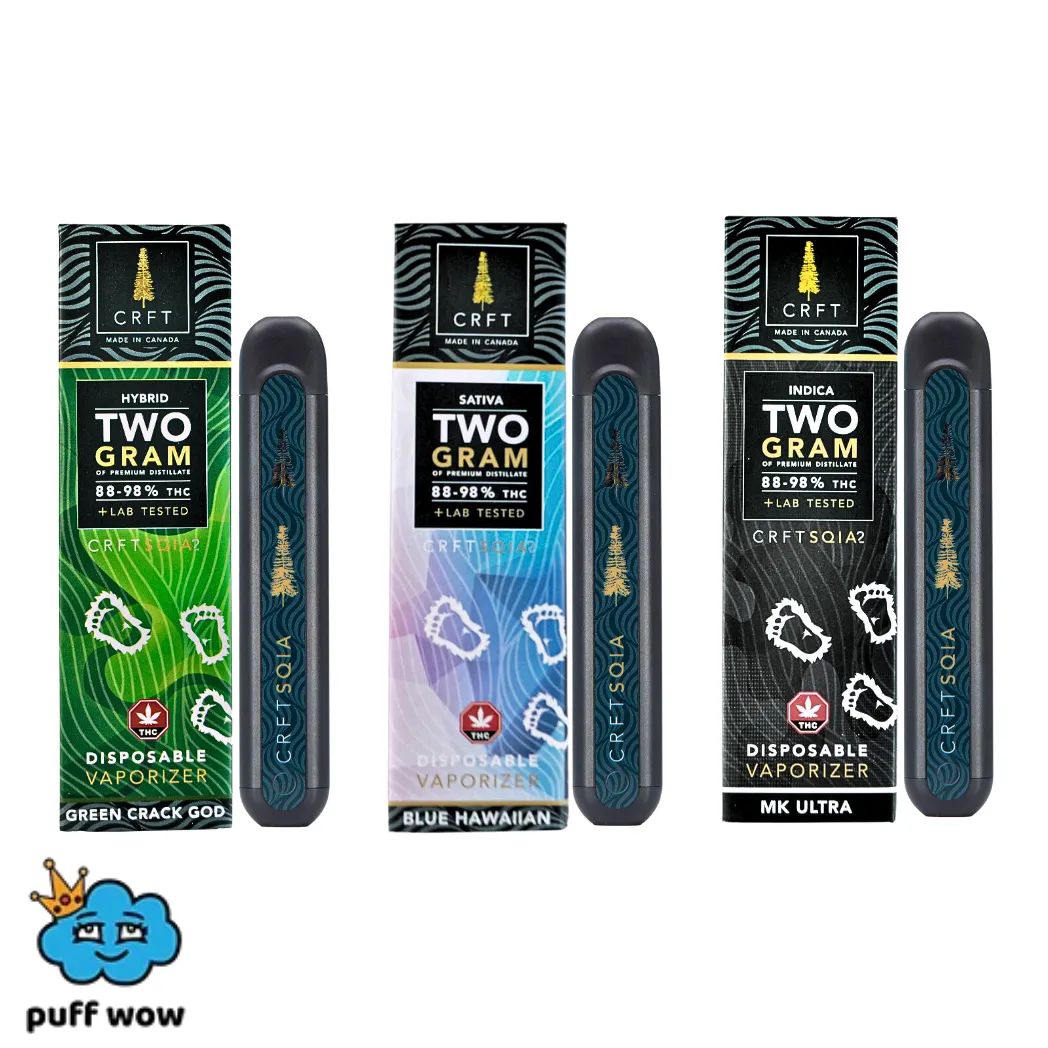
In the vast spectrum of cannabis, terpenes serve as more than just aromatic agents; they are pivotal contributors to the nuanced effects and encounters users undergo. These organic compounds, pervasive across the plant kingdom and abundant within cannabis, exert profound influence on the overall cannabis experience.
Among these terpenes, myrcene stands out prominently. Renowned for its earthy and musky fragrance, myrcene holds a significant role, particularly within the realm of kush strains. Its prevalence often acts as a defining characteristic, setting kush varieties apart and leaving an indelible mark on their aroma, taste, and effects. Delving into the significance of myrcene within kush strains not only sheds light on their distinct attributes but also unravels the intricacies of how they interact with the human body and psyche.
As we embark on a deeper exploration of myrcene and its pivotal role in kush strains, we unearth a captivating convergence of chemistry, cultural significance, and consumption patterns, painting a holistic picture of the cannabis landscape.
Myrcene, a prominent terpene found in cannabis, boasts a distinctive chemical structure characterized by a 10-carbon backbone with a branched molecular arrangement. This configuration contributes to its unique properties and effects. While myrcene is prevalent in various plants such as hops, mangoes, and lemongrass, it is particularly abundant in cannabis, often comprising a significant portion of its terpene profile. Within the cannabis plant, myrcene serves multiple purposes, ranging from deterring herbivores to attracting pollinators.
However, its role extends far beyond mere biological functions. Myrcene plays a crucial role in shaping the overall cannabis experience. It is believed to enhance the permeability of cell membranes, facilitating the absorption of cannabinoids such as THC into the bloodstream more efficiently. This phenomenon, known as the “entourage effect,” underscores the synergistic relationship between myrcene and other cannabis compounds, amplifying the therapeutic and psychoactive effects of the plant.

As a result, myrcene-rich cannabis strains often exhibit potent sedative and relaxing properties, making them popular choices among users seeking relief from pain, insomnia, and stress. Understanding the multifaceted nature of myrcene provides valuable insights into its significance within the realm of cannabis and its profound impact on human physiology and psychology.
Kush strains hold a storied history deeply rooted in the rugged landscapes of the Hindu Kush mountain range, spanning the border between Afghanistan and Pakistan. Originally cultivated for their resilience and potency, these strains have since gained widespread acclaim for their distinct characteristics and effects. Kush strains are renowned for their dense buds, rich trichome coverage, and earthy aroma, which often features prominent notes of pine, citrus, and spice. These traits contribute to their unmistakable allure and enduring popularity among cannabis enthusiasts.
Central to the allure of kush strains is the prevalence of myrcene, a terpene that frequently dominates their aromatic profiles. Myrcene’s abundance in kush varieties not only contributes to their characteristic fragrance but also plays a pivotal role in shaping their effects on the body and mind. As one of the primary terpenes found in cannabis, myrcene is known for its sedative and relaxing properties, making it a key factor in the deeply calming and euphoric experiences often associated with kush strains.
Some of the most renowned kush strains rich in myrcene include OG Kush, Pink Kush, and Hindu Kush. OG Kush, a legendary hybrid with origins shrouded in mystery, is celebrated for its potent effects and complex terpene profile, with myrcene playing a prominent role in its relaxing and mood-enhancing properties. Similarly, Bubba Kush, a classic indica strain cherished for its tranquilizing effects and earthy aroma, owes much of its allure to its high myrcene content. Hindu Kush, an ancient landrace strain revered for its resilience and potency, boasts a rich terpene profile dominated by myrcene, contributing to its deeply relaxing and therapeutic effects.
These popular kush strains serve as shining examples of the profound influence myrcene exerts within the realm of cannabis, underscoring its significance in shaping the unique characteristics and experiences associated with these beloved varieties. Whether seeking relief from pain, stress, or insomnia, myrcene-rich kush strains offer a compelling option for cannabis users seeking profound relaxation and therapeutic benefits.
Myrcene, a terpene abundant in cannabis, boasts a plethora of therapeutic properties that contribute to its profound impact on human health and well-being. Known for its sedative, analgesic, and anti-inflammatory effects, myrcene is widely recognized for its potential to alleviate pain, reduce inflammation, and promote relaxation. This terpene’s ability to enhance the permeability of cell membranes facilitates the absorption of cannabinoids such as THC, leading to an amplification of their therapeutic effects—a phenomenon commonly referred to as the entourage effect.
The entourage effect underscores the synergistic interactions between myrcene and other cannabinoids and terpenes present in cannabis, resulting in enhanced therapeutic outcomes. By modulating the activity of receptors within the endocannabinoid system, myrcene collaborates with compounds like THC and CBD to produce a spectrum of effects ranging from pain relief to mood elevation. This synergistic interplay not only maximizes the therapeutic potential of cannabis but also mitigates potential adverse effects, offering users a balanced and holistic consumption experience.
Myrcene’s influence extends beyond its therapeutic properties, significantly impacting the overall cannabis consumption experience. Strains rich in myrcene are often characterized by their sedative and calming effects, making them popular choices for individuals seeking relaxation and stress relief. Moreover, myrcene’s distinctive aroma, with its earthy and musky notes, contributes to the sensory experience of consuming cannabis, enhancing the enjoyment and satisfaction derived from the plant.
The potential medical applications of myrcene are vast and varied, encompassing a wide range of conditions and symptoms. From chronic pain and inflammation to anxiety and insomnia, myrcene-rich cannabis strains offer promising avenues for therapeutic intervention. Furthermore, ongoing research suggests that myrcene may possess antioxidant, antimicrobial, and neuroprotective properties, further expanding its potential utility in the treatment of various health conditions.
Myrcene emerges as a versatile and valuable component of cannabis, exerting a profound influence on therapeutic outcomes, consumption experiences, and potential medical applications. As our understanding of this remarkable terpene continues to evolve, so too does its potential to improve the lives of individuals seeking relief and wellness through the power of cannabis.
Myrcene holds a significant place within cannabis culture, particularly within the realm of kush strains, where its abundance has helped shape the identities of some of the most beloved varieties. As a key terpene in kush strains, myrcene’s influence extends far beyond its physiological effects, permeating the cultural fabric of cannabis consumption. Its association with relaxation, euphoria, and tranquility has earned myrcene a revered status among enthusiasts, who often seek out kush strains for their distinctively calming and therapeutic properties.

Moreover, myrcene plays a central role in the entourage effect, a phenomenon that underscores the synergistic interactions between cannabinoids and terpenes in cannabis. By modulating the activity of receptors within the endocannabinoid system, myrcene enhances the therapeutic effects of other compounds present in the plant, such as THC and CBD. This collaborative synergy amplifies the overall effects of kush strains, contributing to their reputation for delivering potent and well-rounded experiences.
In addition to its physiological effects, myrcene contributes significantly to the aroma and flavor profiles of kush strains, further enriching the sensory experience of cannabis consumption. The earthy, musky scent of myrcene infuses kush strains with distinctive notes that evoke images of pine forests, spice markets, and citrus groves. These complex aromatic profiles not only enhance the enjoyment of consuming cannabis but also serve as a source of fascination and inspiration for enthusiasts and connoisseurs alike.
Ultimately, myrcene’s influence on kush culture transcends its physiological effects, permeating every aspect of the cannabis experience—from the cultivation and consumption of kush strains to the rich tapestry of traditions, rituals, and narratives that surround them. As a cornerstone of cannabis culture, myrcene continues to captivate and inspire generations of enthusiasts, ensuring its enduring legacy within the vibrant and evolving landscape of cannabis.
Identifying myrcene-rich kush strains requires a combination of knowledge, diligence, and a discerning eye for detail. Firstly, understanding terpene profiles is essential. Terpene profiles provide valuable insights into the aromatic composition of cannabis strains, including the relative abundance of myrcene. By familiarizing oneself with the typical terpene profiles of kush strains, enthusiasts can develop a keen sense of what to look for when seeking myrcene-rich varieties.
Secondly, reading lab reports and labels is a crucial step in identifying myrcene-rich kush strains. Many reputable dispensaries and producers provide detailed lab reports that analyze the terpene content of their products, allowing consumers to make informed decisions based on scientific data. By reviewing these reports, consumers can identify strains with high myrcene concentrations and confidently select products that align with their preferences and desired effects.
Finally, recommendations from trusted sources can be invaluable in finding myrcene-rich kush strains. Consulting with knowledgeable bud tenders, cannabis enthusiasts, or online communities can provide valuable insights and recommendations based on personal experiences and collective wisdom. Additionally, exploring reviews and testimonials from other consumers can offer valuable guidance in selecting high-quality kush strains with abundant myrcene content.
Identifying myrcene-rich kush strains requires a combination of education, research, and community engagement. By understanding terpene profiles, reading lab reports, and seeking recommendations from trusted sources, consumers can navigate the vast landscape of cannabis products with confidence and find the perfect myrcene-rich kush strain to suit their needs and preferences.
Myrcene extraction methods play a pivotal role in determining the quality and potency of cannabis products, particularly those rich in terpenes. Various extraction techniques are employed to isolate myrcene and other desirable compounds from cannabis plant material, each with its own advantages and considerations. Common extraction methods include solvent-based techniques such as hydrocarbon extraction (e.g., butane or propane), solventless methods like rosin pressing, and CO2 extraction, which utilizes carbon dioxide as a solvent.
Preserving terpene profiles is paramount in myrcene extraction, as terpenes like myrcene contribute significantly to the aroma, flavour, and effects of cannabis products. During extraction, maintaining the integrity of terpenes is essential to ensure the final product retains its characteristic aroma and therapeutic properties. Solvent-based extraction methods, while effective at extracting cannabinoids and terpenes, may result in some loss of volatile compounds due to the use of heat and pressure. In contrast, solventless methods and CO2 extraction are often preferred for their ability to preserve terpene profiles more effectively, resulting in higher-quality products with enhanced aromatic and therapeutic characteristics.
The choice of extraction method can have a significant impact on myrcene content in cannabis extracts. Solvent-based techniques may yield higher concentrations of myrcene but can also carry the risk of solvent residue and degradation of delicate terpenes during processing. On the other hand, solventless methods and CO2 extraction typically yield purer extracts with better preservation of terpene profiles, including myrcene. As a result, products extracted using these methods may offer a more robust representation of the original plant’s terpene composition, providing consumers with a more authentic and enjoyable cannabis experience.
Understanding myrcene extraction methods is essential for producing high-quality cannabis extracts rich in terpenes. By selecting extraction techniques that prioritize terpene preservation and minimize degradation, producers can create products that capture the full spectrum of aromatic and therapeutic compounds present in the cannabis plant, including the beloved terpene myrcene.
Myrcene’s relationship with cannabinoids is a complex interplay that significantly influences the overall effects and experiences of cannabis consumption. At its core, myrcene interacts synergistically with the primary cannabinoids THC and CBD, enhancing their therapeutic and psychoactive effects. This interaction between myrcene and cannabinoids is multifaceted, with each component influencing the other’s activity within the body. For example, myrcene is believed to enhance the permeability of cell membranes, facilitating the absorption of cannabinoids such as THC into the bloodstream more efficiently. This increased bioavailability may contribute to the potentiated effects of THC, resulting in a more pronounced psychoactive experience. Similarly, myrcene may modulate the activity of CBD, enhancing its anti-inflammatory, analgesic, and anxiolytic properties.

Furthermore, the effects of myrcene can vary depending on the ratios of cannabinoids present in a particular cannabis strain. Different cannabinoid ratios, such as high THC or high CBD content, can influence the potency and character of myrcene’s effects. For instance, strains with higher THC content and lower CBD content may exhibit more sedative and euphoric effects when paired with myrcene, whereas strains with higher CBD content and lower THC content may produce more calming and anxiolytic effects.
Moreover, myrcene demonstrates synergistic effects with specific cannabinoids beyond THC and CBD. Research suggests that myrcene may enhance the activity of other lesser-known cannabinoids, such as CBG (cannabigerol) and CBC (cannabichromene), further amplifying the therapeutic potential of cannabis. This synergy underscores the importance of considering the entire spectrum of cannabinoids and terpenes present in a cannabis strain, rather than focusing solely on THC and CBD content, to fully appreciate and harness the plant’s therapeutic benefits.
Understanding the intricate relationship between myrcene and cannabinoids provides valuable insights into the complexities of cannabis pharmacology and consumption. By recognizing and leveraging the synergistic interactions between these components, consumers can optimize their cannabis experiences and maximize the therapeutic potential of the plant.
Myrcene’s presence extends beyond traditional flower consumption, making its way into various alternative cannabis products like concentrates, edibles, and topicals. These products can contain myrcene in different concentrations, depending on factors such as extraction methods and formulation techniques. In concentrates, myrcene content can vary depending on the extraction process used, with methods like CO2 extraction often preserving terpene profiles more effectively. Similarly, edibles and topicals may contain myrcene derived from cannabis extracts or infused with terpene blends to achieve desired effects.
Moreover, the effects of myrcene can differ between consumption methods due to factors such as bioavailability and metabolism. For example, inhalation methods like vaping or smoking may result in quicker onset and stronger effects compared to oral consumption, where myrcene must pass through the digestive system before entering the bloodstream. As a result, individuals may experience varying degrees of sedation, relaxation, or pain relief depending on the consumption method chosen.
When selecting myrcene-rich products in alternative forms, consumers should consider several factors to ensure optimal experiences. First and foremost, it’s essential to review product labels and lab reports to determine the terpene content, including myrcene levels. Look for products that specify terpene profiles and concentrations, as this information can guide your selection process. Additionally, consider factors such as product potency, intended effects, and personal preferences when choosing myrcene-rich products in various forms.
Myrcene’s presence in alternative cannabis products offers diverse consumption options for consumers seeking its therapeutic benefits. By understanding the myrcene content in concentrates, edibles, and topicals, recognizing differences in effects between consumption methods, and employing tips for selecting myrcene-rich products, individuals can tailor their cannabis experiences to suit their needs and preferences effectively.
The journey through myrcene’s significance in kush strains illuminates a fascinating intersection of biology, culture, and consumption within the cannabis world. Myrcene, with its earthy allure and profound effects, stands as a defining terpene within the realm of kush strains, shaping their aroma, flavour, and therapeutic potential. Understanding myrcene’s role not only enhances our appreciation for these cherished varieties but also provides deeper insights into the intricate dynamics at play within the cannabis plant.
Moreover, the importance of understanding terpenes in cannabis consumption cannot be overstated. Terpenes like myrcene exert significant influence on the effects and experiences of cannabis, underscoring the need for consumers to consider more than just cannabinoid content when selecting strains. By embracing terpene education, enthusiasts can elevate their cannabis experiences and make more informed choices that align with their preferences and wellness goals.
Looking ahead, the future implications and research directions for myrcene in the cannabis industry are promising. Continued exploration into myrcene’s therapeutic properties, synergistic interactions with other cannabis compounds, and potential medical applications hold immense potential for advancing our understanding of this versatile terpene. As the cannabis industry evolves and matures, myrcene is poised to play an increasingly pivotal role in shaping the development of new products, formulations, and treatment modalities, offering exciting opportunities for innovation and discovery.
In essence, delving into the myrcene mystique unveils a world of possibilities within kush culture and beyond. By recognizing myrcene’s significance, understanding terpenes, and embracing ongoing research, we can unlock the full potential of cannabis as a source of wellness, inspiration, and discovery.
Order weed online in Winnipeg. Puff Wow makes it easy to buy Cannabis online with our secure checkout and fast delivery.
Winnipeg, Manitoba
Canada

